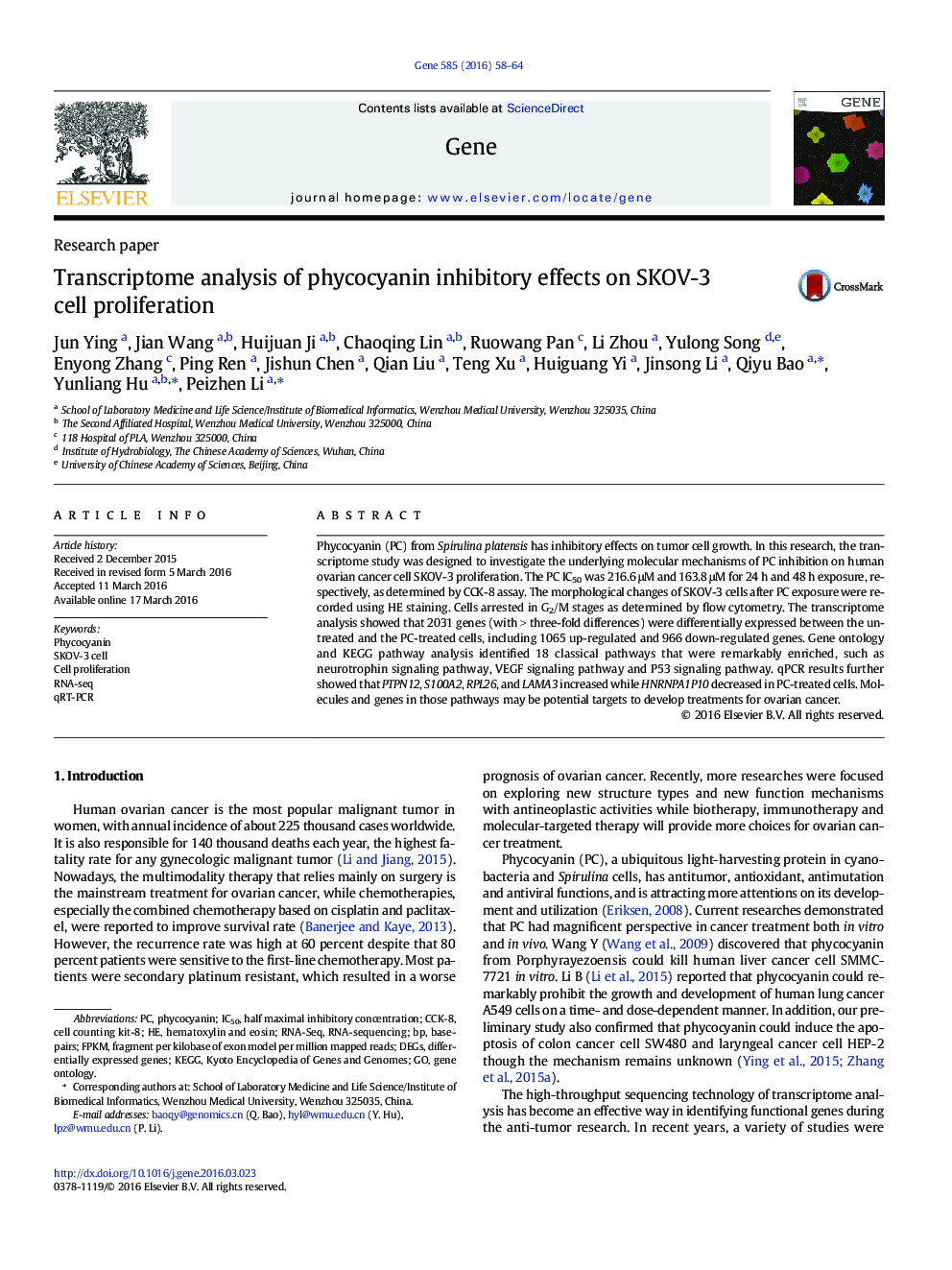| کد مقاله | کد نشریه | سال انتشار | مقاله انگلیسی | نسخه تمام متن |
|---|---|---|---|---|
| 2815022 | 1159845 | 2016 | 7 صفحه PDF | دانلود رایگان |

• The effects of PC in SKOV-3 cells include inhibition of proliferation, changes in morphology and cell cycle arrest.
• With transcriptome, we screened and identified 2031 DEGs and 18 signal pathways related to PC inhibition of SKOV-3 cells.
• PTPN12, S100A2, RPL26, LAMA3 and HNRNPA1P10 could be used as potential targets for ovarian cancer therapy.
Phycocyanin (PC) from Spirulina platensis has inhibitory effects on tumor cell growth. In this research, the transcriptome study was designed to investigate the underlying molecular mechanisms of PC inhibition on human ovarian cancer cell SKOV-3 proliferation. The PC IC50 was 216.6 μM and 163.8 μM for 24 h and 48 h exposure, respectively, as determined by CCK-8 assay. The morphological changes of SKOV-3 cells after PC exposure were recorded using HE staining. Cells arrested in G2/M stages as determined by flow cytometry. The transcriptome analysis showed that 2031 genes (with > three-fold differences) were differentially expressed between the untreated and the PC-treated cells, including 1065 up-regulated and 966 down-regulated genes. Gene ontology and KEGG pathway analysis identified 18 classical pathways that were remarkably enriched, such as neurotrophin signaling pathway, VEGF signaling pathway and P53 signaling pathway. qPCR results further showed that PTPN12, S100A2, RPL26, and LAMA3 increased while HNRNPA1P10 decreased in PC-treated cells. Molecules and genes in those pathways may be potential targets to develop treatments for ovarian cancer.
Journal: Gene - Volume 585, Issue 1, 1 July 2016, Pages 58–64